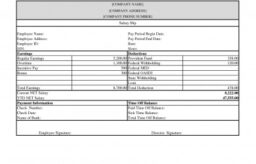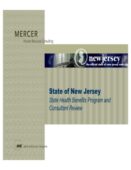What Are Audit Assertions And Why They Are Important
Content
Any accrued and prepaid expenses have been accounted for correctly in the financial statements. When financial statements are prepared, the preparer is asserting the fundamental accuracy of those statements.
Stakeholders will get the clear understanding they need, and your team will have useful and accurate data they can rely on for effective financial planning and decision making. Financial statements are of limited utility if they’re not readily understood by stakeholders. Businesses and nonprofits regularly prepare their balance sheet, income statement, etc. at the end of an accounting period to provide a clear, correct, and complete record of their financial standing. These documents are useful not only for strategic planning and forecasting, but for auditors, who rely on the organizations they audit to be truthful. Financial statements have financial statement level risks such as management override or the intentional overstatement of revenues. For example, the intentional overstatement of revenues has a direct effect upon the existence assertion for receivables and the occurrence assertion for revenues.
The occurrence assertion is used to determine whether the transactions recorded on financial statements have taken place. This can range from verifying that a bank deposit has been completed to authenticating accounts receivable balances by determining whether a sale took place on the day specified. Think of assertions as a scoping tool that allows you to focus on the important. Not all assertions are relevant to all account balances or to all disclosures. Usually, one or more assertions are relevant to an account balance, but not all. For example, existence, rights, and cutoff might be relevant to cash, but not valuation or understandability. For the latter two, a reasonable possibility of material misstatement is not present.
Accounting Topics
Also known as management assertions or financial statement assertions, audit assertions are the claims made by management certifying the financial statements presented are complete and accurate. They may be explicit (i.e., stated directly) or implicit (i.e., implied rather than directly stated). This assertion confirms the liabilities, assets, and equity balances recorded in a financial statement actually exist. The auditor is required to collect whatever evidence is necessary to establish a connection between the values on the document and their real world counterparts. Look at two or three of your audit files and review your risk assessments. Are you assessing risk at the transaction level or at the assertion level?
Plan to spend more time in performing risk assessment procedures and documenting your risks at the assertion level—and possibly less time performing further audit procedures. All businesses make assertions in their financial statements.
In this example, the auditor responds by adding a substantive test for detection of fictitious vendors. For an auditor, relevant assertions are those where a risk of material misstatement is reasonably possible. So, magnitude (is the risk related to a material amount?) and likelihood (is it reasonably possible?) are both considered. Inspection involves examining records or documents, whether internal or external, in paper form, electronic form, or other media, or physically examining an asset. An example of inspection used as a test of controls is inspection of records for evidence of authorization.
What Are Financial Statement Assertions?
Recalculation consists of checking the mathematical accuracy of documents or records. Recalculation may be performed manually or electronically.
Evidence obtained from a knowledgeable source that is independent of the company is more reliable than evidence obtained only from internal company sources. Salaries and wages cost has been calculated accurately. Any adjustments such as tax deduction at source have been correctly reconciled and accounted for. Transactions have been recorded accurately at their appropriate amounts. QuickBooks Online is the browser-based version of the popular desktop accounting application. It has extensive reporting functions, multi-user plans and an intuitive interface.
Account Balance Assertions
Assets, liabilities and equity balances exist at the period end. All transactions that were supposed to be recorded have been recognized in the financial statements.
- Similarly, with financial statements, it is difficult to determine what financial information is free from material misstatement.
- Financial performance measures how well a firm uses assets from operations and generates revenues.
- The financial statement assertions are important to investors since nearly every financial metric used to evaluate a company’s stock is computed using figures from the company’s financial statements.
- I think that very few controls are ready for testing in a small entity .
- Salaries and wages expense does not include the payroll cost of any unauthorized personnel.
- See how your choices perform when evaluated side-by-side.
For liabilities, it is an assertion that all liabilities listed on a financial statement belong to the company and not to a third party. It should be ensured that these classifications are done correctly because otherwise, it would result in an incorrect declaration of major line heads in the financial statements.
What Is A Relevant Assertion?
For instance, the format of the Income Statement and the Balance Sheet should reflect the standards that are provided in the system that the corporation follows. It also needs to be ensured that the transactions actually pertain to the given entity, only. Completeness — all balances that should have been recorded have been recorded. Completeness — all transactions that should have been recorded have been recorded. Confirming all information necessary to contextualize financial information is included.
Why was the SOX Act created?
The Sarbanes-Oxley Act (or SOX Act) is a U.S. federal law that aims to protect investors by making corporate disclosures more reliable and accurate. The Act was spurred by major accounting scandals, … In this such as Enron and WorldCom (today called MCI Inc.), that tricked investors and inflated stock prices.
Yes, usually the smaller the entity is, the harder it is to create good controls. I think that very few controls are ready for testing in a small entity .
What Are The 7 Financial Statement Assertions? Explanation
Suppose the auditor assesses risk at the transaction level, assessing all accounts payable assertions at high. It means the auditor should perform substantive procedures to respond to the high-risk assessments for each assertion.
The auditor also might select specific items to obtain an understanding about matters such as the nature of the company or the nature of transactions. Rights and obligations – The company holds or controls rights to the assets, and liabilities are obligations of the company at a given date. Transactions, events, balances and other financial matters have been disclosed accurately at their appropriate amounts. Assets, liabilities and equity balances have been valued appropriately. Transactions have been recognized in the correct accounting periods.
Accuracy — the transactions were recorded at the appropriate amounts. Examining bank statements to verify all deposits made have been properly recorded. Confirming salaries and wages have been allocated in the appropriate amounts to production expenses, administrative costs, etc. The following auditing standard is not the current version and does not reflect any amendments effective on or after December 31, 2016. The current version of the auditing standards can be found here. Inventory has been recognized at the lower of cost and net realizable value in accordance with IAS 2 Inventories. Any costs that could not be reasonably allocated to the cost of production (e.g. general and administrative costs) and any abnormal wastage has been excluded from the cost of inventory.
Companies must attest to assertions of existence, completeness, rights and obligations, accuracy and valuation, and presentation and disclosure. Auditors use this assertion to confirm assets, liabilities, and equity recorded in a company’s financial statements actually belong to that same company. Examining bank records to confirm recorded transactions and account balances, verify cash flow reports, etc. For certified public accountants and other auditors, determining the veracity of these assertions involves testing various aspects of the financial records and disclosures. If the goal of assessing risk is to quickly complete a risk assessment document , then assessing risk at the transaction level makes sense. But the purpose of risk assessment is to provide planning direction. Therefore, we need to know the risk of material misstatement at the assertion level.
The auditor must plan and perform audit procedures to obtain sufficient appropriate audit evidence to provide a reasonable basis for his or her opinion. Audit entity owns or controls the inventory recognized in the financial statements. Any inventory held by the audit entity on account of another entity has not been recognized as part of inventory of the audit entity. It is the auditor’s responsibility to determine that these items are properly disclosed in the financial statements. If the auditor is unable to obtain a letter containing management assertions from the senior management of a client, the auditor is unlikely to proceed with audit activities. One reason for not proceeding with an audit is that the inability to obtain a management assertions letter could be an indicator that management has engaged in fraud in producing the financial statements.
IFRS developed ISA315, which includes categories and examples of assertions that may be used to test financial records. It should be ensured that the transactions and the events are properly clubbed , and clearly described. For example, salaries and wages expenses should be properly allocated between the respective heads. Basically, it ensures that the represented transactions in the Financial Statements include transactions that are only relevant to the current financial year.
- Take the time to familiarize yourself with the different types of audit assertions and how analytical procedures used to test them helps establish the truthful disclosure of a company’s financial standing.
- Best Of We’ve tested, evaluated and curated the best software solutions for your specific business needs.
- Moving on, presentation is another key assertion that auditors have to keep in mind when auditing financial statements.
- External confirmations are another useful procedure for auditing management assertions.
- Presentation and disclosure – The components of the financial statements are properly classified, described, and disclosed.
- Auditors verify these claims by performing tests of internal controls.
All inventory units that should have been recorded have been recognized in the financial statements. Any inventory held by a third party on behalf of the audit entity has been included in the inventory balance. Salaries and wages cost recognized during the period relates to the current accounting period.
From an auditor’s perspective, they have to be entirely sure that all line items in the financial statements have sufficient compliance with these assertions. The main premise is that for each line in the financial statements, the auditors’ primary objective is to ensure that there are no material misstatements in the given assertions. Organizations of all sizes and types, from megacorporations to small businesses to nonprofits, prepare financial statements they are obliged to prepare and present as transparently and accurately as possible when audited. Public companies, for example, are required by law to have an annual audit of their financial statements. In auditing expenses, the auditor knows that a risk of fictitious vendors exists.
- And when payables are shown at $58,980, the company asserts that the liability is complete.
- Tracing receiving documentation and shipping documentation to purchases and sales to verify purchases and sales are recorded within the proper fiscal year.
- One reason for not proceeding with an audit is that the inability to obtain a management assertions letter could be an indicator that management has engaged in fraud in producing the financial statements.
- Accuracy pertaining to different accounting standards is also an important premise because it has to be ensured that all the relevant entries have been appropriately measured and duly recorded.
- However, it is difficult to measure whether the statement is indeed true.
Accounts payable is not complex and there are no new accounting standards related to it. The company suffered a fictitious vendor fraud during the year, so the occurrence assertion has uncertainty.
These can be done with assets such as inventory, cash, shares and securities. This physical examination gives small business owners greater assurance that company records represent business assets accurately. The different financial statement assertions attested to by a company’s statement preparer include assertions of existence, completeness, rights and obligations, accuracy and valuation, and presentation and disclosure. When performing an audit, it is the auditor’s job to obtain the necessary evidence to verify the assertions made in the financial statements. Whether you’re using accounting software or recording transactions in multiple ledgers, the audit assertion process remains the same.
The assertion is that all account balances exist for assets, liabilities, and equity. Completeness — all disclosures have been included in the financial statements.
How do you test for completeness assertions?
You test this assertion by examining title documents or deeds for proof of ownership. You also review lease agreements to make sure that any capitalized leases are included on the balance sheet and that any operating leases aren’t. Completeness: Completeness evaluates the management assertion opposite to occurrence.
An acceptable valuation basis has been used to value inventory cost at the period end (e.g. Salaries & wages expense has been incurred during the period in respect of the personnel employed by the entity.
Compiled Vs Certified Financial Statements: What’s The Difference?
External confirmations are another useful procedure for auditing management assertions. These involve obtaining corroborative information directly from third parties, such as suppliers, vendors and banks. These confirmations are useful because they can provide reliable audit evidence on the existence of a company’s assets. They are more reliable than merely going over company invoices or using analytical processes because a third party’s records are involved. External confirmations can also verify rights assertions made by management, which is an area where physical inspection is lacking. As you consider the significant account balances, transaction areas, and disclosures, specify the relevant assertions.



